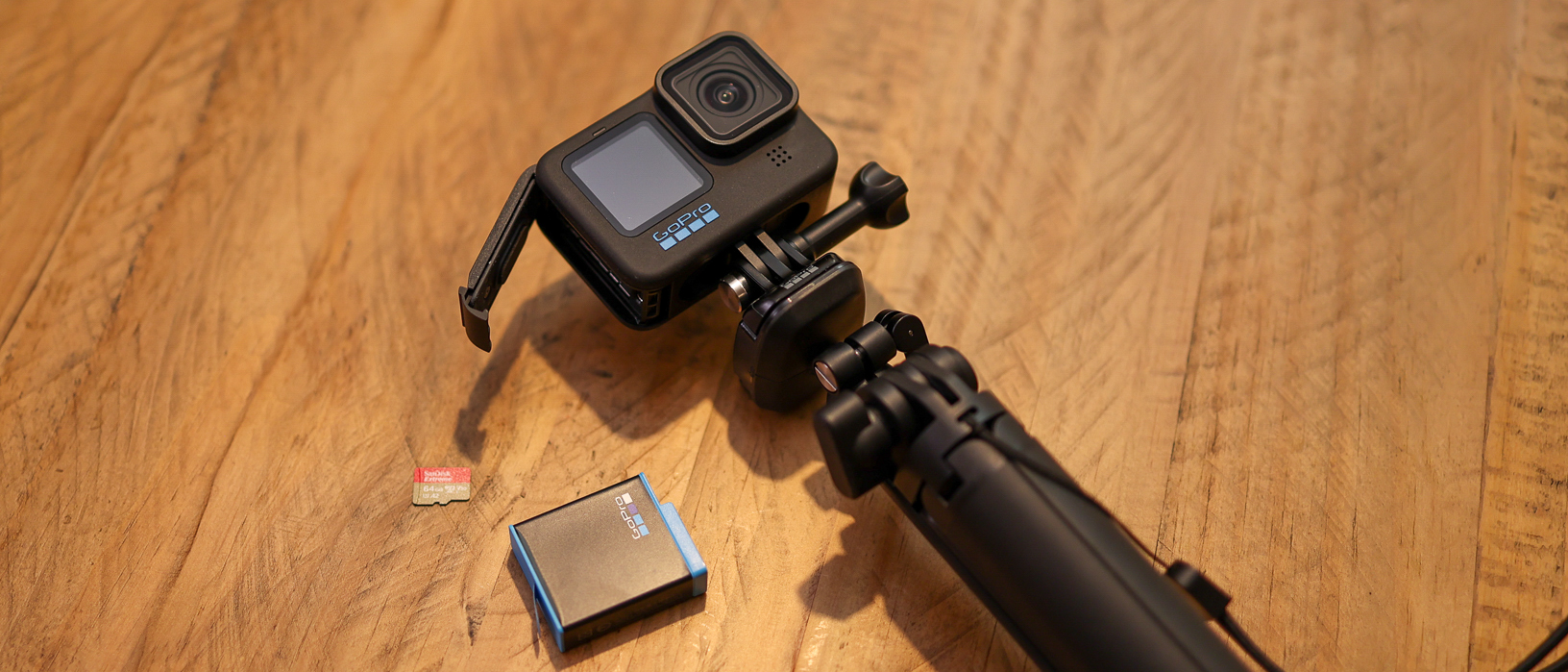Digital Camera World Verdict
Despite looking the same as its predecessor, the Hero 10 Black benefits from better performance across the board. Its frame rates are higher, its interface is smoother, its transfers are faster and its photos and videos look a touch more polished than those of the Hero 9 Black. While battery life has taken a hit when maxing out those shooting modes, between everything we’ve mentioned, as well as improved horizon leveling, and a much improved GoPro Quik app experience, there are fewer chinks in GoPro’s connected action cam armor than ever before.
Pros
- +
Responsive touch display
- +
Nippy performance
- +
Boosted horizon leveling
- +
Fast wired media transfer speeds
Cons
- -
Mediocre low light performance
- -
Worse battery life than Hero 9 Black
- -
Pricier than Hero 9 Black on launch
Why you can trust Digital Camera World
GoPro is the action cam industry leader, and the Hero 10 Black is GoPro’s new flagship for 2021. It brings back a familiar design and the same sensor introduced on the GoPro Hero 9 Black, however, this update brings with it a new processor. You might ask yourself – what difference is a processor going to make when it’s powering the same hardware? It turns out, in the Hero 10 Black’s case, the new GP2 processor makes a lot of difference.
The Hero 10 Black can capture 5.3K resolution footage at up to 60fps, or 4K footage at 120fps – matching the Hasselblad tuned OnePlus 9 Pro at 4K resolution. It also boosts the flagship’s horizon leveling to 45 degrees, supports both wired and wireless transfer to your Android or iOS device, and captures better low-light photos and videos, according to GoPro. Perhaps the most exciting thing about the Hero 10 Black though is the promise of improved responsiveness when compared to the laggy Hero 9 Black.
Also read our GoPro Hero 10 vs 11 Black comparison
Design
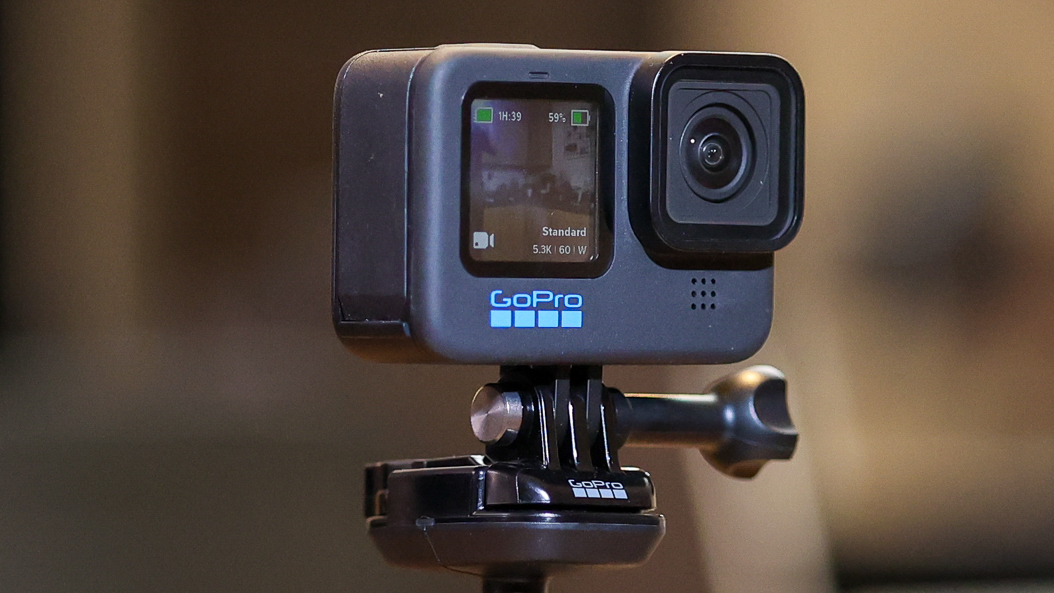
Other than a blue logo and insignia on the Hero 10 Black, the latest GoPro looks virtually identical to last year's model. Its slightly darker hard plastic frame houses a power and record button, and if you slide open the flap on the side, you’ll reveal a battery cavity, microSD card slot, and a USB-C port. On the rubberized front is a small 1.14-inch screen, and around the back, the main 2.27-inch touchscreen is how you control pretty much everything on the cam. It’s all very deja vu. Deja vu isn’t a bad thing though. GoPro has also brought back the flip-out feet introduced on the Hero 8 Black, which make it a piece of cake to mount even without any housing.
The Hero 10 Black is also solid and durable, with waterproofing up to 33 feet (10 meters), and a new, tougher lens with hydrophobic, water-shedding glass which is more scratch-resistant and captures with reduced ghosting when compared to last generation’s lens.
Interestingly, the new GoPro Hero 10 Black is a hair lighter than the Hero 9 at 153g (versus 158g), but the two cameras are the same size, so work with the same mods introduced last year, including the Media Mod and Max Lens Mod. That being said, the Max Lens Mod support will be made available in an update, not on launch.
Screens
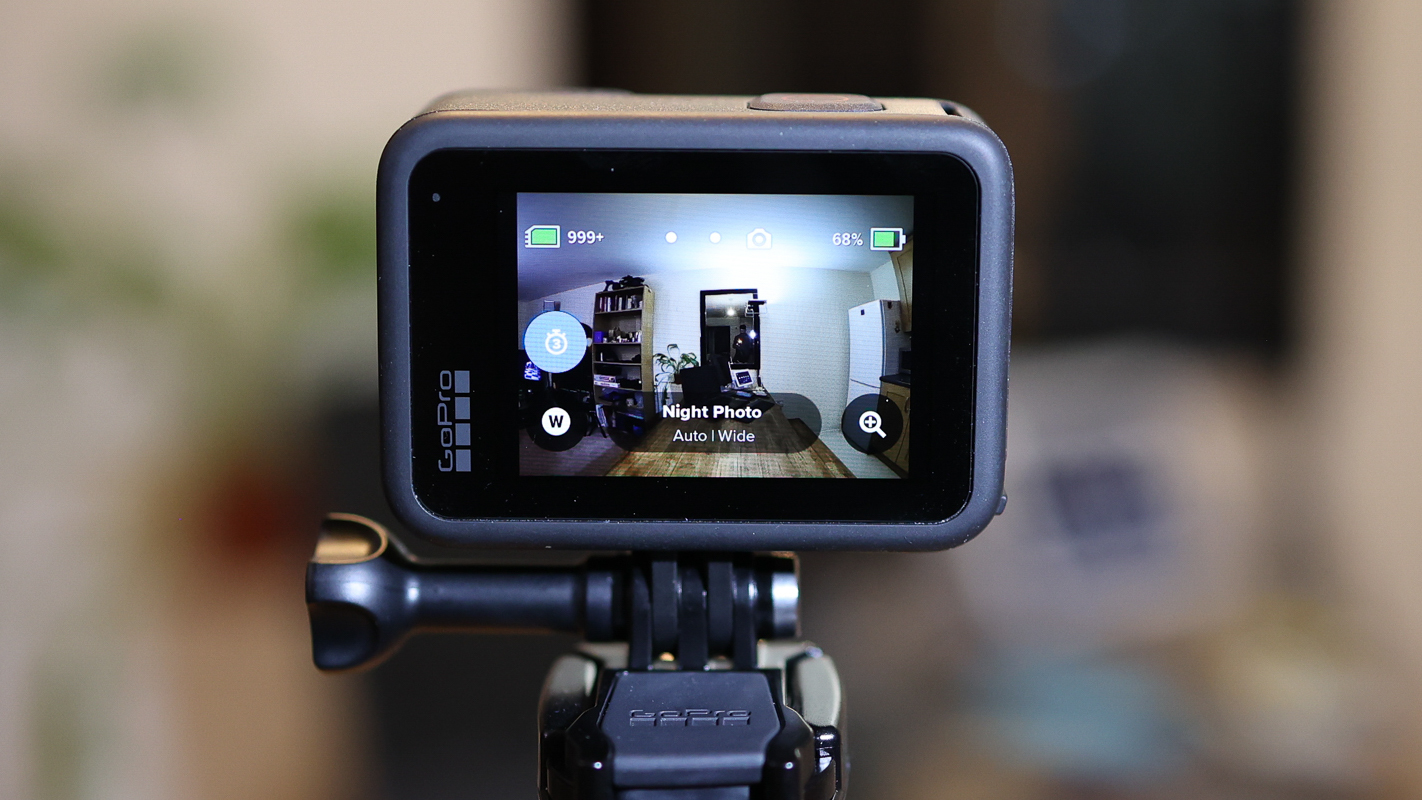
While the two screens on the Hero 10 Black share the same specs as those of the Hero 9 Black, this time, they benefit from a faster processor, so the rear touchscreen is more responsive, and the front screen has a higher frame rate.
To recap, the Hero 9 and 10 main displays are 2.27 inches and sport a slightly taller than 16:9 aspect ratio. Still well suited to Full HD and 4K video, the screens strike a middle ground between 4:3 photos and traditional video aspect ratios.
The 1.4-inch LCD front display isn’t touch-sensitive, but it’s bright and easy enough to see, outdoors. The settings of both screens can be controlled through the camera settings or through the app if controlling the GoPro on a smartphone or tablet.
While the screens are LCDs, so aren’t as punchy as AMOLED panels, viewing angles are strong, especially when looking at the rear screen, and they’re as sharp as they need to be to give you a decent preview of what you’re shooting.
We wouldn’t have minded slightly smaller bezels, particularly on the rear screen, but at the end of the day, if you’re using a GoPro, there’s a good chance you’re not even looking at what you’re shooting, so this isn’t a dealbreaker by any means.
Performance and battery
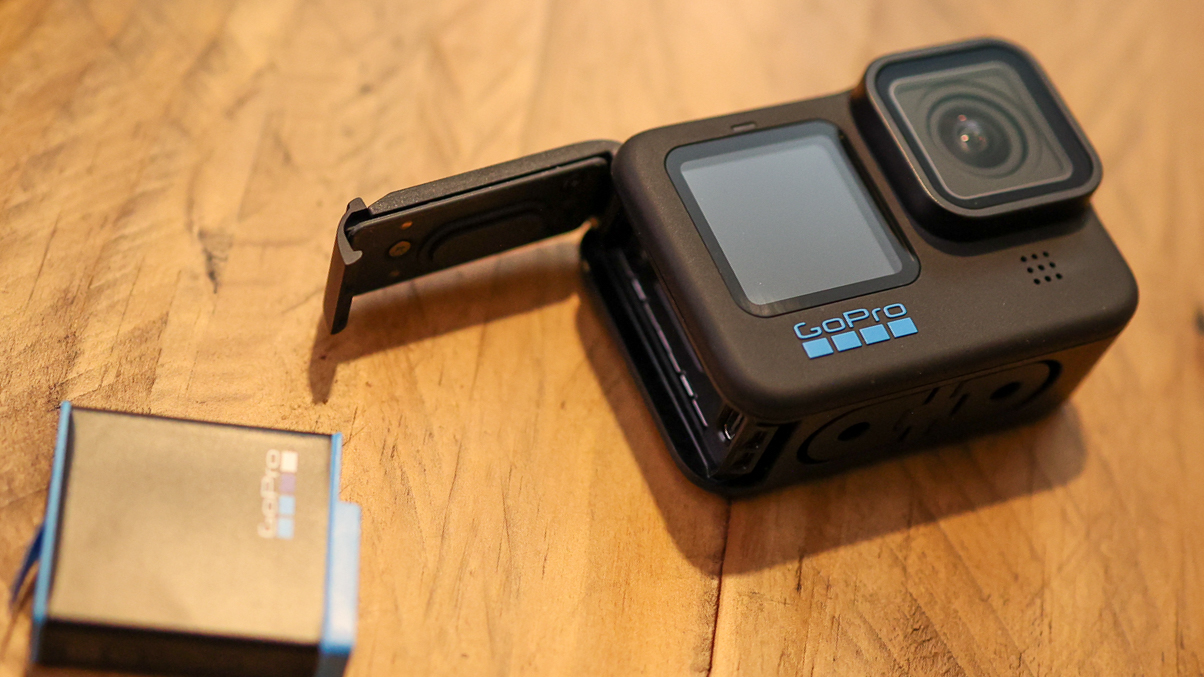
The enhancements to the user experience made possible by the new GP2 processor can’t be overstated. If you’ve used the Hero 9 Black, you will know how laggy the swiping and tapping can feel. That’s all been tightened up for the Hero 10 – it’s nippy, there are no touch sensitivity issues and improvements also extend to faster photo and video processing times too.
The GoPro Hero 10 Black’s interface is identical to what we’ve seen on past GoPros. Horizontally swipe through the UI to switch between the modes – Photo, Video, and Timelapse; swipe up to pull up the media on your memory card, and pull down to access the camera’s settings.
The new GoPro offers improved connection support too. For starters, there’s 2.4GHz and 5GHz WiFi, and now, you can offload footage and photos from your Hero 10 Black to your phone or tablet with a wired connection. This cuts the transfer times by up to half, with support for Hero 10 to USB-C or Lightning connector.
GoPro also brings back support for both Webcam streaming and live streaming. Supported streaming platforms include Facebook, YouTube, Twitch, as well as RTMP which can be plugged into other services. Additionally, GoPro.com’s streaming service supports higher quality feeds, though needs you to opt into the GoPro Subscription.
Despite using the same 1720mAh battery as the Hero 9 Black, the Hero 10 Black doesn’t last quite as long, especially when shooting at the new higher frame rates. While clip shooters who grab a minute of action at a time will be fine shooting a whole day, if you’re grabbing a timelapse or recording for a significant amount of time, then you’ll want a power bank or a spare battery.
Recording, resolution, and stabilization
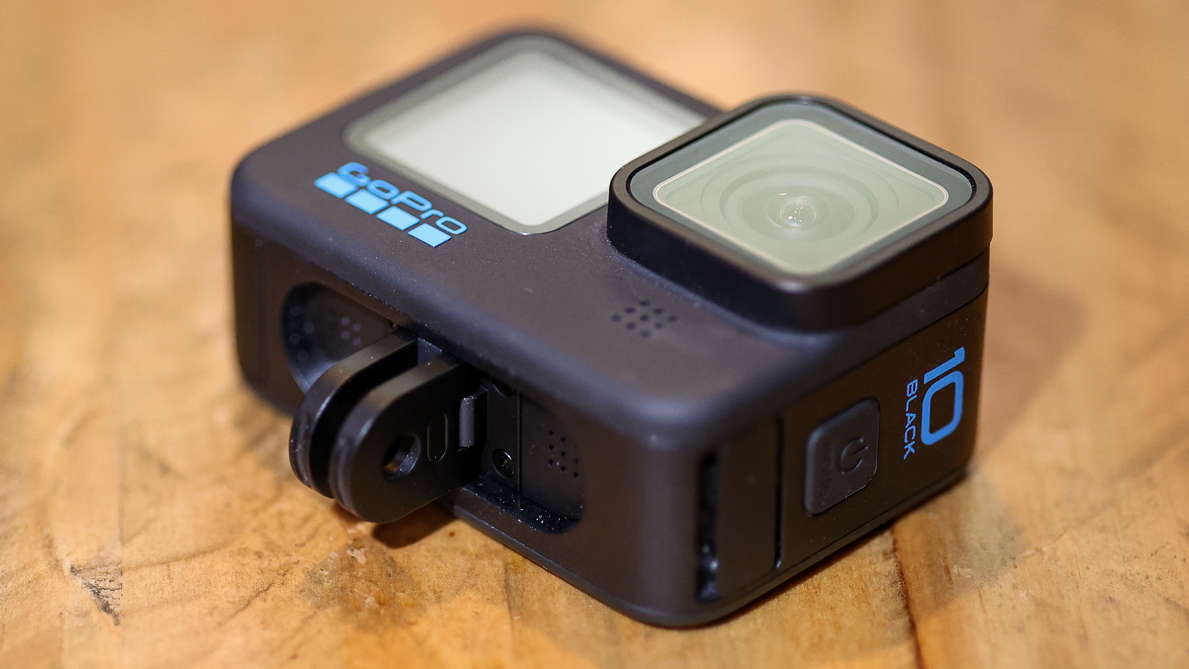
The Hero 10 Black brings back the 23.6MP sensor introduced on its predecessor, with support for up to 5.3K resolution video at 60 fps, 4K resolution video at 120 fps, or 2.7K resolution at 240 fps. You can also grab 15.8MP stills from 5.3K video, and if you’re capturing video in 4:3 aspect ratio, this climbs up to 19.6MP stills. These frame rates are what really sets the Hero 10 Black’s footage apart from the 9 Black.
When it comes to photography, you can expect standard photo mode as well as burst, night, SuperPhoto, and RAW Photo options.
Sample video shot with the GoPro Hero10 Black
The Hero 10 Black also introduces a new HyperSmooth 4.0 stabilization, which holds footage together steadily, though when compared to last year’s Hero 9 Black, it isn’t noticeably much better side by side. This isn’t a criticism per se, given just how good HyperSmooth 3.0 was on the Hero 9 Black.
The best feature HyperSmooth 4.0 introduces, however, is improved Horizon Leveling. Now, you can tilt the Hero 10 Black up to 45 degrees in Linear mode without the image tilting one bit. This is up from 27 degrees on last year’s Hero, and it works great. The camera also supports Boost, which works at up to the full resolution of 5.3K at 60fps and holds the scene incredibly still, albeit with reduced quality and micro judders – more noticeable when you crop into footage.
Photo and video quality
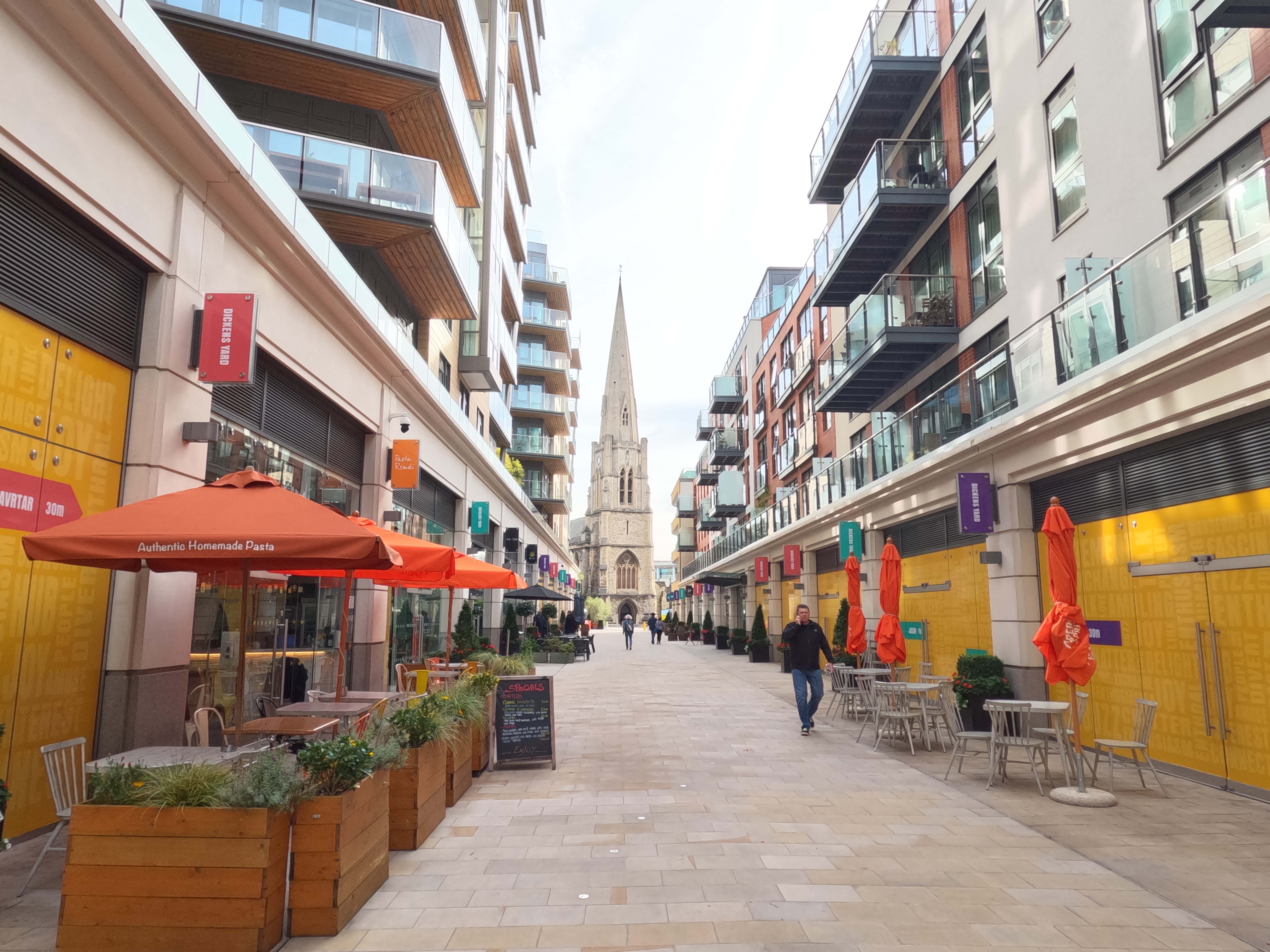
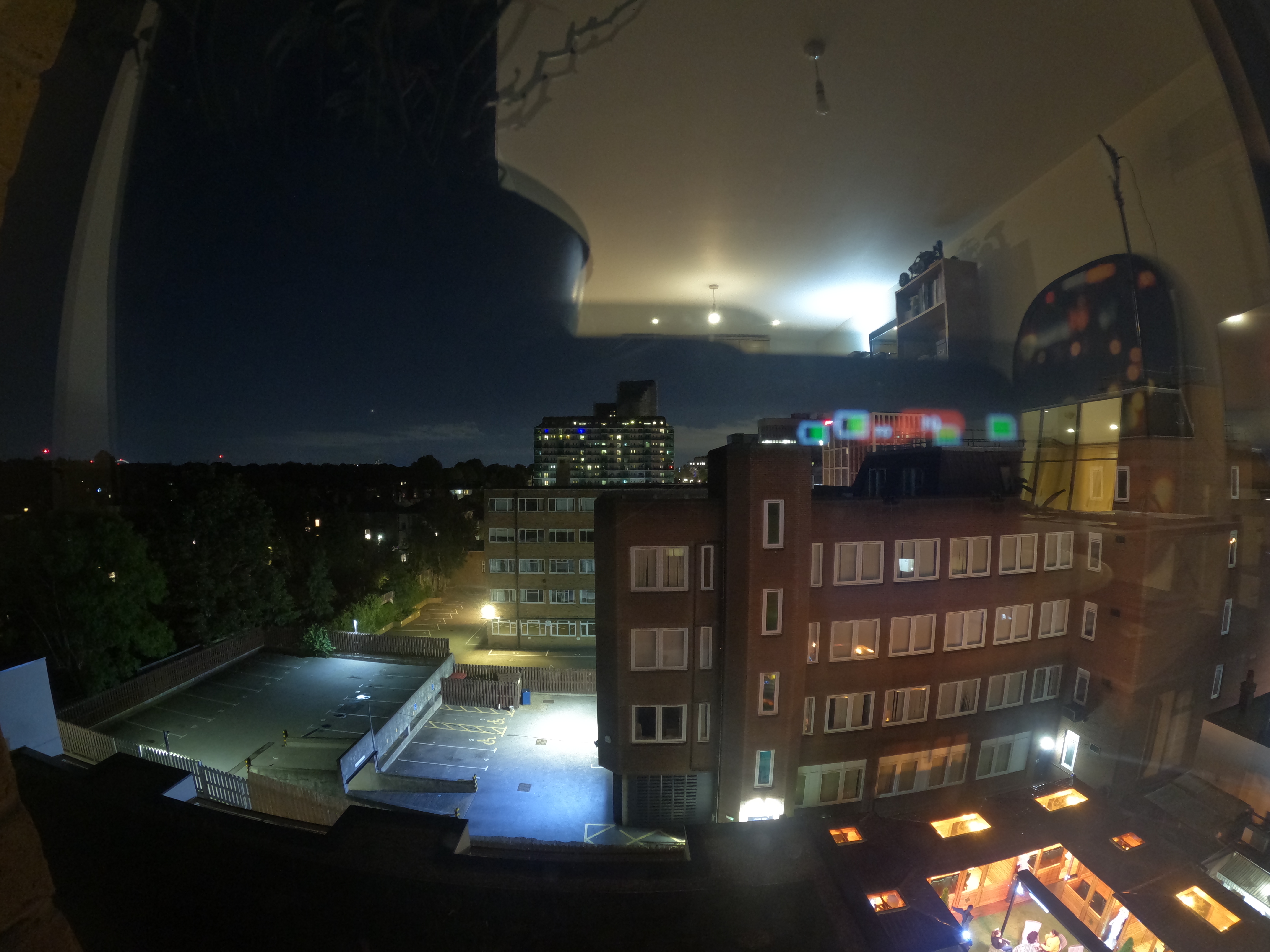
With the same sensor as the Hero 9 Black, our expectations when it came to image quality improvements with Hero 10 Black photos and video were curbed. GoPro claims that the new GP2 Processor boosts low light performance in particular though thanks to new processing algorithms, so we were delighted to see that grain was lessened across photos and video captured in dim scenes.
Color reproduction across footage and stills looks balanced, with a healthy amount of punch and pop balanced with natural tones. The contrast levels also look more nuanced in extreme scenes with a backlight or a strong light source, though we did run into a couple of issues with the HDR mode. Specifically, the boosted shadow areas can get totally swamped by grain. When compared to a smartphone’s HDR mode – we compared it to the Xiaomi Mi 11 Ultra, GoPro misses out.
Also worth noting, despite quality improvements, the Hero 10 Black is still a day lover’s camera. At its heart is a tiny sensor, and this shows in the lowlight photos and videos it captures. In turn, it won’t be a good match for anyone who mainly captures content at night.
GoPro Hero10 Verdict
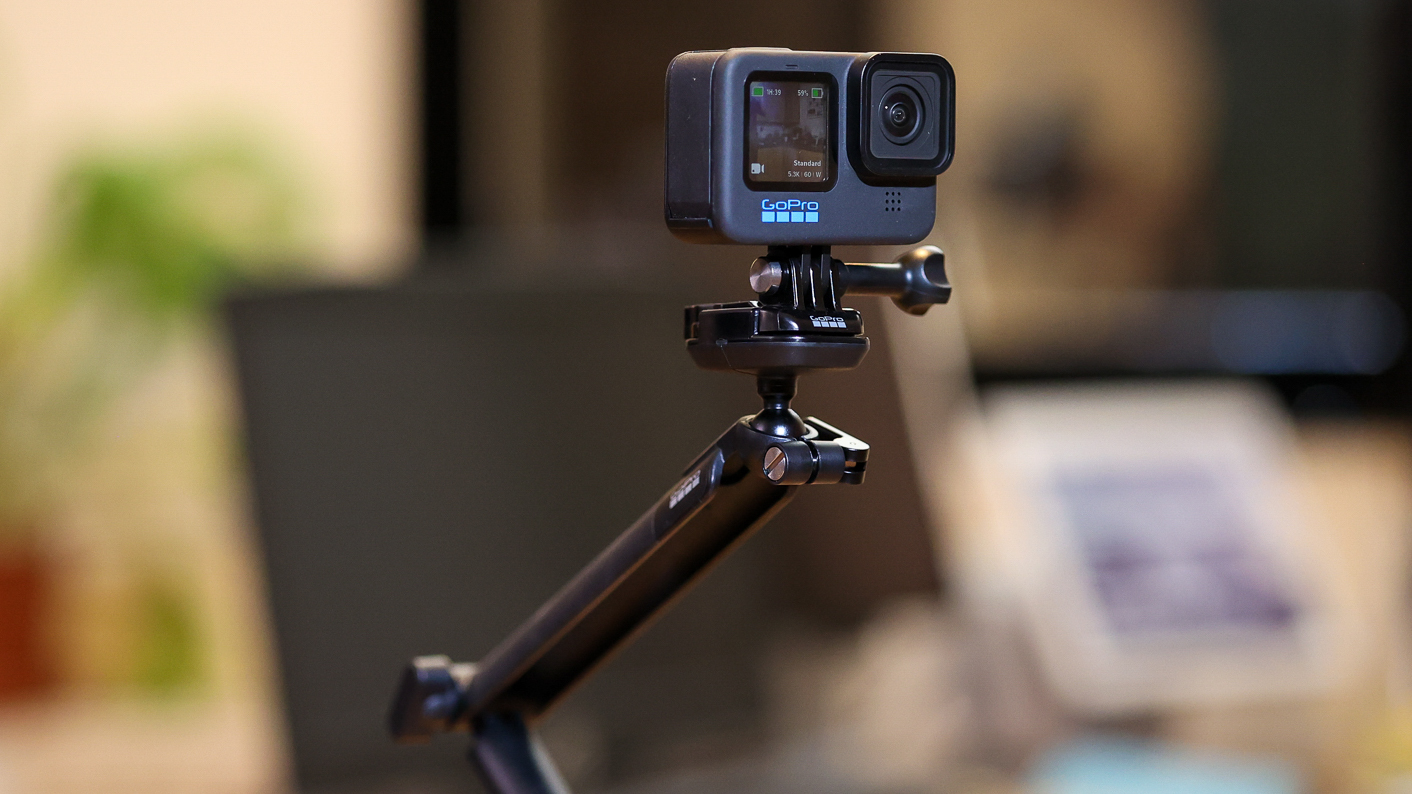
The Hero 9 Black was a fine camera, but its unresponsive screen shattered the illusion of excellence at times. This time around, GoPro has responded head-on to that criticism with the Hero 10 Black, and the camera also boasts faster frame rates and improved modes.
The whole GoPro experience across devices has also seen a bump up in terms of user experience, with the GoPro app now supporting wired transfer and improved live streaming support.
With better performance across the board, therefore, while the Hero 9 Black was good, the Hero 10 Black is a great package. Priced at $399 / £379 with a GoPro Subscription, and $499 / £479 without, while it’s far from cheap, it’s the best action camera you can buy until something better comes along from the likes of DJI or Sony.
Read more
The best GoPro cameras in 2021
GoPro Hero 8 vs Hero 9 Black
The best GoPro accessories
Best streaming cameras
Best GoPro alternatives
The best waterproof cameras
The best 360 cameras
The best helmet camera
Basil Kronfli is a freelance technology journalist, consultant, and content creator. He trained in graphic design and started his career at Canon Europe before moving into journalism. Basil is also experienced in video production, independently running the YouTube channel TechEdit, and during his time at Future, he worked alongside the Digital Camera World team as a senior video producer.

